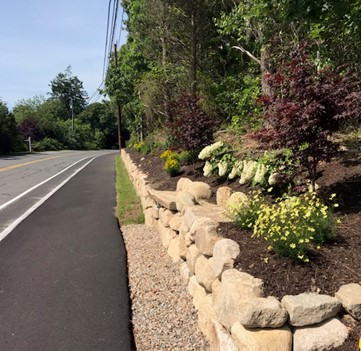Complete Streets on Cape Cod
A Complete Street is one that provides safe and accessible options for all travel modes – walking, biking, transit, and motorized vehicles – for people of all ages and abilities.

Photo of sidewalk in Sandwich completed with funding from the MassDOT Complete Streets Funding Program
Broadly speaking, Complete Streets promote more livable communities. They improve safety, health, economic viability, and quality of life in a community by improving the pedestrian and vehicular environments and providing safer, more accessible, and comfortable means of travel between home, school, work, recreation, and retail destinations.
Complete Streets developed organically in the more historic places on Cape Cod with the pedestrian being the key users in mind with early road designs. In more recent times, automobile-dominated roadway designs have led to the building of some roadways that are not well-suited or safe for all users. Many Cape Cod towns have now adopted polices to ensure that roadway projects consider all road users.
Eight Cape Cod towns have adopted a Complete Streets policy, formalizing the consideration of accommodations for all road users in roadway design: Eastham, Sandwich, Mashpee, Brewster, Orleans, Harwich, Falmouth, and Bourne.
The key principle of these polices is that the needs of all roadway users should be considered whenever work is done on a municipal roadway. There is no single design for a Complete Street. Policies do not require specific design features nor require changes that would be in conflict with local character. In some locations, particularly those with higher vehicle volumes or speeds, Complete Streets may include a dedicated space for pedestrians and bicyclists such as sidewalks, bike lanes, and/or side paths. In other locations, such as low-speed, low-volume local roads, shared space for all users may be appropriate.
Adoption of a Complete Streets Policy qualifies towns for funding through the MassDOT Complete Streets Funding Program for the development of a Complete Streets Prioritization Plan and construction grants. The Cape Cod Commission has assisted a number of communities in the development of Prioritization Plans.
Related Posts




